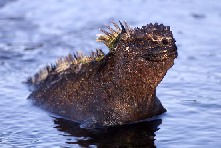– The Galapagos Islands – By Kayla Allen
There are many places in the world that I would love to have the opportunity to visit. Few however that I have dreamed of going to from the moment I first learned of their existence as a child. The Galapagos Islands, off the coast of Ecuador may be the one and only place in the world that makes it onto that list for me. For a small group of islands they held so much mystery and wonder for me when I was young and continue to even to this day.
I'm not alone in holding them in such high regard. Their relative seclusion and therefore great number of species found nowhere else on the planet made them perfect for Darwin to develop and research his theory of evolution. In 1959 the 97.5% of the Galapagos Islands were declared a national park and therefore protected as such.
With such a closed ecosystem it is one of the easiest places on earth to see cause and effect. Before the islands were protected as a national park, their beauty drew many colonists whose effects on species population and the island's flora and fauna is still evident today. Even before the colonists whalers and pirates had their indelible effect on the islands, depleting its number of tortoise (where the islands get their name), in some cases to extinction and also hunting the endemic fur seal to the brink of extinction.
The Galapagos Islands are now a thriving eco-tourists' dream. Fortunately measures have been taken to limit the effect of its visitors on the ecosystem. While there are some hotels located on the islands the majority of its visitors stay in ships docked on its parameters coming in for day trips and returning to their ships for meals and to retire for the evening. As the surrounding waters are also protected a good many of the tourist ships are sailboats, which, powered by wind also help to limit the mark tourism has on the islands. Eating meals aboard also provides a buffer on foodstuffs not native to the islands being fed to its wildlife. There is also a list of banned items and substances that no visitor can bring to the islands.
Some of the endemic wildlife the Galapagos has to offer:
The Galapagos Tortoise
The island's namesake is the largest living tortoise and is endemic to nine islands of the Galapagos Islands. Adults can weigh over 661pounds and measure 8.24 feet long. Although the maximum life expectancy of a wild tortoise is unknown, the average life expectancy is estimated to be 150-200 years.
The Marine Iguana
The only sea-going lizard in the world, this reptile lives on rocky coasts feeding on seaweed and can remain underwater for up to 45 minutes.

The Blue-footed Booby
A long-winged seabird it's an average 2.65ft long and weighs 3lbs, with the females slightly larger than the males. The name "booby" comes from the Spanish term bubi, which means "stupid fellow". The Blue-footed Booby was so dubbed because it clumsiness while on land.



 ShareThis
ShareThis
